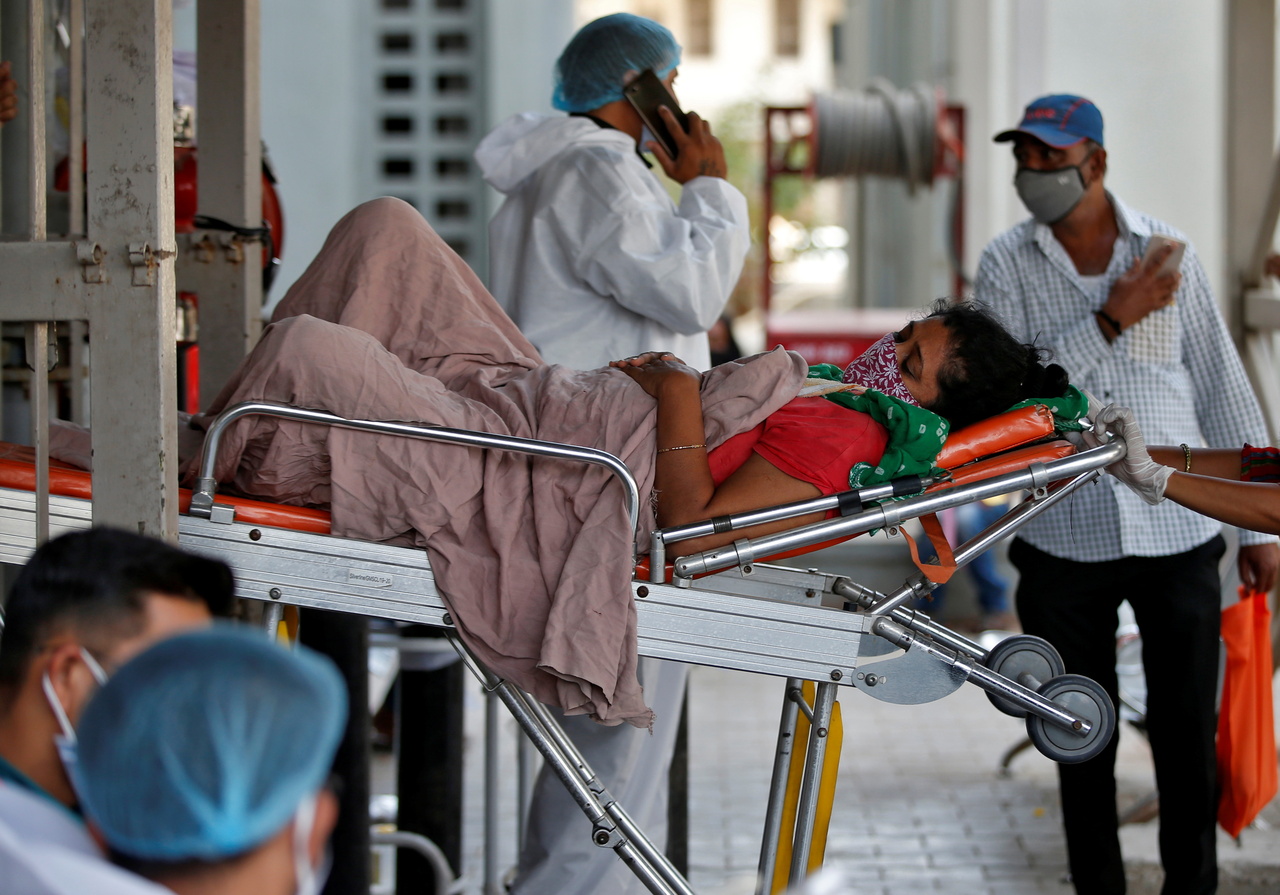Shortage of hospital beds and oxygen as India battles second Covid-19 wave
Sign up now: Get insights on Asia's fast-moving developments

The panicked hunt for hospital beds is a recurring theme across India as it battles its second wave of Covid-19 infections.
PHOTO: REUTERS
Follow topic:
BANGALORE - A 40-year-old domestic helper, known only as Mrs Mumtaz, died on Sunday (April 18) in Bangalore on her way to a fourth hospital in a desperate attempt to find an intensive care bed. Despite her oxygen saturation levels dropping by the hour, hospitals would not take her.
"One hospital had no beds available, another said it won't admit her without a Covid test result, and the last one asked for 40,000 rupees (S$710) upfront," said Mr Mohammed Zaki Khalil, a volunteer with non-profit group Mercy Mission, who had tried to help the suspected Covid-19 patient.
The single mother's death leaves her two children without a parent.
This panicked hunt for hospital beds is a recurring theme across India as it battles its second wave of Covid-19 infections.
It has caught India's creaking healthcare system unawares, with reports of shortages in critical-care beds and oxygen, delays in testing and hospitals turning away critically ill patients.
Before the pandemic, India had about 0.5 hospital bed for every 1,000 people, compared with a global average of nearly 2.9.
The country's spending on public health has historically been low, hovering around 1 per cent of gross domestic product for over a decade. As a result, medical staff and infrastructure face chronic underfunding and shortages. In 2016, India was ranked 145 out of 195 countries on The Lancet's index of global healthcare access and quality.
According to official estimates, India has one allopathic doctor for 1,404 people, compared with the World Health Organisation's prescribed ratio of 1 to 1,000. About 70 per cent of healthcare is believed to be provided by the private sector.
In February, the Finance Commission, an official advisory body, admitted in a report that the pandemic had "exposed various fault lines in the country's health sector".
The gap is more explicit than ever today.
India's richest state Maharashtra, national capital Delhi and the most populated state of Uttar Pradesh are among 10 states that account for almost 80 per cent of the load of the pandemic. They are already falling short of health infrastructure and equipment ranging from oxygen to ventilators.
On Sunday, Delhi's Chief Minister Arvind Kejriwal said in a video statement that there were only "100 beds left" in the capital, and there was an "acute shortage of oxygen". Consumption of medical oxygen in Maharashtra has also reached the state's full production capacity of 1,250 tonnes.

The Indian Railways has begun running trains to transport liquid oxygen across the country. The Indian government also banned the supply of oxygen for industrial use from Thursday. But Indian Commerce Minister Piyush Goyal eventually put the onus of the shortage on the states, asking them to "keep demand under control".
However, curtailing demand during a critical phase of the pandemic might not be easy.
"In this wave, we have witnessed more cases of breathlessness, which is why the higher demand for oxygen," said Dr Samiran Panda, the head epidemiologist at the Indian Council of Medical Research that is spearheading Covid-19 research and protocol.
"Going by the data we have, the percentage of death in the second wave is not more than the first. But crematoriums are filling up and more people have seen relatives and friends die. I think this is because the rapid transmission of the new variants through avoidable large gatherings might be affecting more elderly and people with comorbidities," he added.

To ease the burden on the system, Dr Panda requested people "with mild or no symptoms should not rush to hospitals", but recover at home, with a doctor on call.
In panic, more people are now getting tested, leading to a backlog to be processed.
Turnaround time for test results in some states is now 48 to 72 hours, preventing quick isolation of positive patients, said experts.
States are also running low on remdesivir, an antiviral drug doctors prescribe to cut short hospital stays for very ill patients, leading one, Jharkhand, to ask the Indian government permission to import 50,000 vials from Bangladesh.
A senior pharmaceutical manufacturer who is himself recovering from Covid-19 said the seven Indian companies producing remdesivir had reduced output levels from last October as India's Covid-19 numbers began to plateau.
"Companies will not make large amounts of a drug with nine to 12-month expiry without clear orders. But the government wasn't ready to stockpile the drug keeping in mind exigencies. That's surprising to me," he said.
With remdesivir export banned earlier this month, manufacturers have now ramped up production to meet peak domestic needs. The pharma source expected the shortage to be met in a fortnight.
As every branch of India's healthcare sags under the weight of the second wave, doctors, nurses, ambulance drivers and social workers try to help families rushing sick loved ones door to door from hospitals.
As Mr Diwakar Gupte, the grandson of a wheezing elderly woman in Mumbai, put it: "We are hoping to prolong her life with prayer until she finds a doctor."

